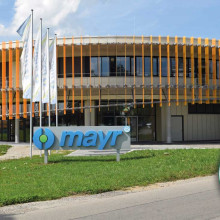Electromagnetic brake | Spring pressure and permanent magnet
- Details
- Hits: 17210
Discover the Electromagnetic brake, their functionality and areas of application. As precise Spring pressure brake or efficient Permanent magnet brake They are essential for control and safety in automated and manual drive systems. Learn how these innovative braking systems improve performance and ensure reliable operation.

Contents
- Electromagnetic brakes – the most important things in brief
- Electromagnetic brake innovations
- Tailor-made brakes for autonomous forklifts
- Spring-applied brakes stimulate the energy transition
- Spring-applied brakes for robot arms
- Electromagnetic brakes for vertical axes
- Electromagnetic linear brake with 10 times faster switching time
- Select the correct servo safety brake
- Spring pressure and permanent magnet brake in comparison
- Electromagnetic brake rod and rod clamping
- Applications of electromagnetic brakes
- FAQ
Electromagnetic brakes – the most important things in brief
The Development of electromagnetic brakes is advancing as they are valued for their efficiency and precision in various industrial sectors. Demand is increasing, especially with regard to Safety brakes, due to their ability to stop machines instantly, increasing workplace safety. This is particularly valued in the material processing, vehicle construction and printing industries.
The trend goes to greater efficiency and reliability and the brakes become smarter. Equipped with Brake Monitoring They can be used for predictive maintenance or condition monitoring. In the wake of the energy transition, greater emphasis is being placed on sustainability, which is already common practice in the automotive industry Braking energy recuperation is also used in industrial drives.
Electromagnetic brakes innovations
Modern spring-applied brakes and permanent magnet brakes offer precise control, fast response times and high reliability. This makes them ideal for applications where safety and efficiency are crucial. Here are the new features:
Tailor-made brakes for autonomous forklifts
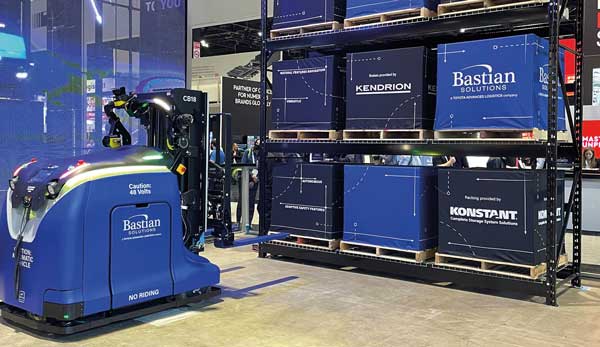 24.04.2024 | Kendrion Intorq has developed an innovative braking technology for the newly developed autonomous forklift Bastian Solutions CB18 in close collaboration with Bastian Solutions, a member of the Toyota Group and manufacturer of industrial trucks. The specialized spring-applied brake solution is characterized by precisely adjusted braking torques, which make a decisive contribution to the safety and efficiency of the vehicles.
24.04.2024 | Kendrion Intorq has developed an innovative braking technology for the newly developed autonomous forklift Bastian Solutions CB18 in close collaboration with Bastian Solutions, a member of the Toyota Group and manufacturer of industrial trucks. The specialized spring-applied brake solution is characterized by precisely adjusted braking torques, which make a decisive contribution to the safety and efficiency of the vehicles.
The trend towards autonomous driving in intralogistics leads to new requirements for vehicle construction, especially for brake design. The newly developed brakes are optimally tailored to the shortened axle distance and the reduced length of the forklift, which improves both the maneuverability and the tipping resistance of the vehicle.
The ones from the shortened vehicle design The resulting requirements for braking torque tolerances were particularly high. Here, the minimum torque must ensure compliance with the maximum braking distance in accordance with legal requirements. In contrast, there is only a slightly higher maximum braking torque, so that the vehicle's tipping resistance is maintained in the event of an emergency stop with a raised payload.
Dr.-Ing. Stefan Weigelt, head of customer-specific development at Kendrion Intorq, explains: “On the one hand, our specifications included a very narrow braking torque tolerance. Bastian Solutions also had special specifications for the switching times of our brakes, the tolerable emergency stop energy and the minimum possible number of emergency stops. Based on the technical data of the self-propelled industrial truck such as drive wheel diameter, gear ratio and efficiency Transmissions, we have determined the parameters for an optimal brake design with which we can safely maintain the required braking torques.”
The brakes specially designed for this area of application are based on the model Intorq BFK557. The properties of the brake, adapted to the technical requirements of the self-propelled forklift, could also be implemented by changing the spring force and selecting a special friction system.
Spring-applied brakes stimulate the energy transition
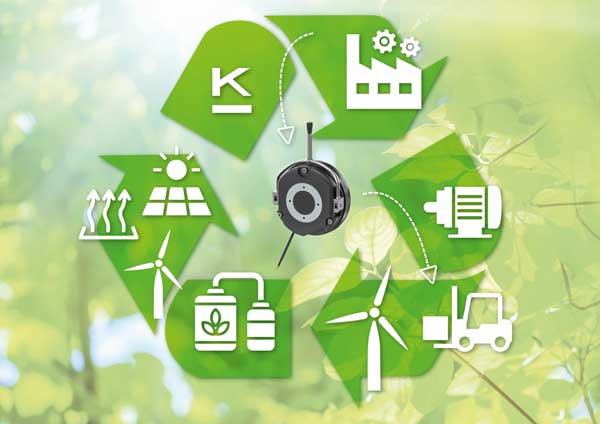 November 07.12.2023, XNUMX | Spring-applied brakes have been providing power for more than five decades Kendrion INTORQ Electric motors in Industrial trucks of all kinds with a safe braking function. In the wake of the energy transition and the associated electrification of the transport sector, the Aerzen brake specialists have significantly expanded their area of application and are now increasingly making their expertise available to the area of e-mobility.
November 07.12.2023, XNUMX | Spring-applied brakes have been providing power for more than five decades Kendrion INTORQ Electric motors in Industrial trucks of all kinds with a safe braking function. In the wake of the energy transition and the associated electrification of the transport sector, the Aerzen brake specialists have significantly expanded their area of application and are now increasingly making their expertise available to the area of e-mobility.
The vehicle manufacturers not only benefit from tried-and-tested quality and customer-optimized brake design, but also from the energy-efficient technology from Kendrion Intorq, which is manufactured in a sustainable production process.
“The electrification of vehicles and materials handling vehicles is currently taking place at great speed,” describes Marco Vollrath, Sales Manager at Kendrion Intorq shares his observations. “Among other things, we see this trend in agriculture, the construction sector and of course in the automotive industry. Added to this is the growing market for driverless transport systems (AGV/AGV). This makes our many years of brake expertise in the area of electric motors all the more important. We know what these brakes have to do and can provide our customers with the specialized advice and supplies they need in the various areas.”
Areas of application for the spring-applied brake – yesterday and today
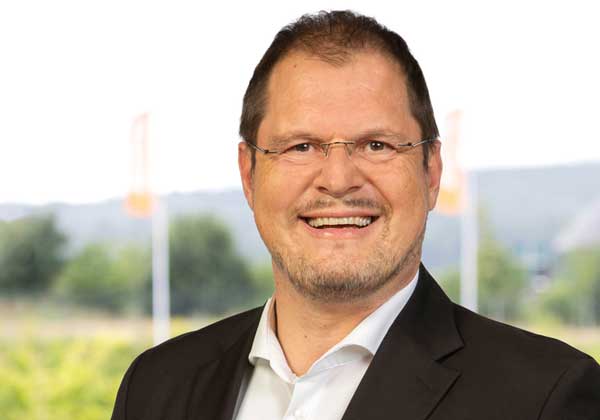 Kendrion Intorq developed its first spring-applied brake in 1971 for a forklift model. Today the company dominates the industrial trucks market segment worldwide. As a result of the need to drive emission-free in halls and closed areas, there is in many cases no alternative to electrical operation of industrial trucks. Accordingly, two out of three of these vehicles now have an electric drive. At the same time, the motor, brake and battery technology used has been repeatedly adapted and optimized over the decades - a technological advantage that automobile and commercial vehicle manufacturers can currently benefit from when electrifying their drive technology.
Kendrion Intorq developed its first spring-applied brake in 1971 for a forklift model. Today the company dominates the industrial trucks market segment worldwide. As a result of the need to drive emission-free in halls and closed areas, there is in many cases no alternative to electrical operation of industrial trucks. Accordingly, two out of three of these vehicles now have an electric drive. At the same time, the motor, brake and battery technology used has been repeatedly adapted and optimized over the decades - a technological advantage that automobile and commercial vehicle manufacturers can currently benefit from when electrifying their drive technology.
The spring-applied brakes from Kendrion Intorq have also been continually perfected over the years in terms of functionality and energy efficiency. After opening, the brake can be kept open with a very low energy requirement through an optimally coordinated holding current reduction. “In addition, we always advise our customers so that the individual brake solution is only as large as necessary and as small as possible,” explains Marco Vollrath. “In this way we will reduce energy consumption to the necessary minimum.”
Produced with renewable energy
The topics of energy efficiency and sustainability not only play a role in the operation of Kendrion INTORQ brakes, but are also taken into account during their production. The company covers part of its electricity needs via a PV system and heats its production halls using local heat from a neighboring biogas plant. “Our brakes have also been used in wind turbines for many years,” summarizes Marco Vollrath. “This closes the cycle – because that’s where the energy is produced that drives the electric motors, which in turn are stopped by our spring-applied brakes.”
Spring-applied brakes for robot arms
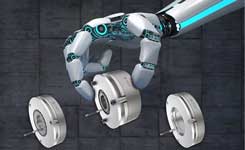 Oct 05.10.2023, XNUMX | With the new standard modular system for robot brakes, Mayr is creating the basis for solutions at an attractive price level. On the PLC 2023 In Nuremberg the company is showing how intelligent, talking brakes and... Shaft coupling can be cleverly used for process monitoring and so on Powertrain Get ready for Industry 4.0 at low cost.
Oct 05.10.2023, XNUMX | With the new standard modular system for robot brakes, Mayr is creating the basis for solutions at an attractive price level. On the PLC 2023 In Nuremberg the company is showing how intelligent, talking brakes and... Shaft coupling can be cleverly used for process monitoring and so on Powertrain Get ready for Industry 4.0 at low cost.
Electromagnetic brakes for vertical axes
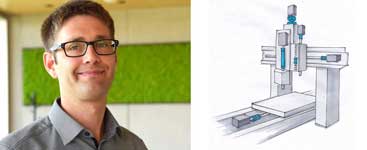 16.08.2023 | Mayr presents to EMO 2023 its portfolio of electromagnetic, pneumatic and hydraulic Safety brakes for securing vertical axes in machine tools and machining centers. These vertical axis brakes protect against all dangerous situations that can occur when operating axes subject to gravity.
16.08.2023 | Mayr presents to EMO 2023 its portfolio of electromagnetic, pneumatic and hydraulic Safety brakes for securing vertical axes in machine tools and machining centers. These vertical axis brakes protect against all dangerous situations that can occur when operating axes subject to gravity.
Electromagnetic linear brake with 10 times faster switching time
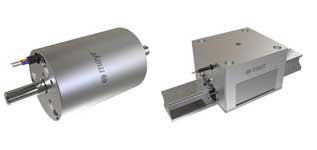 23.11.2021 | To secure linear movements at standstill e.g. B. due to a power failure, safety brakes are often used. They act on separate round rods or piston rods or guide rails. Depending on the applications come here often pneumatic or hydraulic Opening brakes are used because they offer high holding forces.
23.11.2021 | To secure linear movements at standstill e.g. B. due to a power failure, safety brakes are often used. They act on separate round rods or piston rods or guide rails. Depending on the applications come here often pneumatic or hydraulic Opening brakes are used because they offer high holding forces.
Select the correct servo safety brake
 June 03.06.2020, XNUMX | The safety brake for holding a certain position and for emergency stop situations is an important component in the servo drive. So far this applies Servo brake in some cases not monitorable. Mayr With the Roba-servostop, has developed a servo safety brake in a modular system that is particularly suitable for... Robotic offers a solution.
June 03.06.2020, XNUMX | The safety brake for holding a certain position and for emergency stop situations is an important component in the servo drive. So far this applies Servo brake in some cases not monitorable. Mayr With the Roba-servostop, has developed a servo safety brake in a modular system that is particularly suitable for... Robotic offers a solution.
Spring pressure and permanent magnet brake in comparison
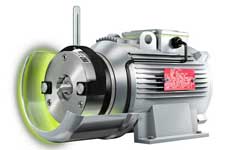 June 03.06.2014, XNUMX | Both spring-applied and permanent magnet brakes have their place. But which one is the right one for the respective application? Since very different aspects have to be taken into account when making the selection, the user should rely on competent advice. Kendrion's article shows that not all brakes are the same.
June 03.06.2014, XNUMX | Both spring-applied and permanent magnet brakes have their place. But which one is the right one for the respective application? Since very different aspects have to be taken into account when making the selection, the user should rely on competent advice. Kendrion's article shows that not all brakes are the same.
Electromagnetic brake rod and rod clamping
 November 28.11.2011, XNUMX | With the HMSB has HEMA developed a rod brake that works with a spring energy storage based on the proven spring principle and can therefore be used not only as a service and holding brake, but also as an emergency stop brake. Due to the electromagnetic operation, the compact HMSB does not require a hydraulic or pneumatic connection for its small installation space.
November 28.11.2011, XNUMX | With the HMSB has HEMA developed a rod brake that works with a spring energy storage based on the proven spring principle and can therefore be used not only as a service and holding brake, but also as an emergency stop brake. Due to the electromagnetic operation, the compact HMSB does not require a hydraulic or pneumatic connection for its small installation space.
There just one power connection with 400 V AC nominal power and the electronic control is already integrated, the HMSB can be easily installed or retrofitted.
If there is no tension on the brake, the spring force presses a conical bushing axially into a conical bore in the housing. This narrows the cross section on the inner diameter of the bushing, so that it clamps onto the central round rod with high force (8 to 14 kN). The spring force is reinforced via the cone angle of the socket. To open the brake, the HMSB is supplied with current, whereby an integrated strong electromagnet attracts a flat armature, which presses the clamping bush out of the cone seat against the spring force. After the tightening phase, the power consumption of the brake is less than 15 VA. At 199 x 120 x 152 mm, the brake has a very compact design and can also be used in harsh environments thanks to its IP65 protection rating.
In the version as a brake, it is clamped on the rod Cone bushing not firmly connected to the housing. Therefore, the mass attached to the housing increases the braking force because it leads to further wedging of the bushing (holding force 14 kN). This ability to move the socket relative to the housing prevents precise positioning, but this is not necessary when braking.
However, for applications that require a precise positioning without braking effect, there is a version available as a rod clamp (holding force 8 kN). With this, the cone bushing is firmly connected to the housing and therefore cannot be easily moved as with the brake version - ideal for precise positioning. During clamping, the spring presses on a freely movable hub with an inner cone, on which the magnetic force also acts to open it.
Applications of electromagnetic brakes
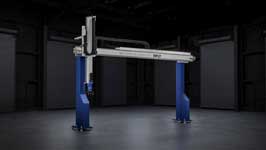 There are safety brakes from Mayr hardly any industrythat the drive specialist does not serve. They protect people and machines in elevators and escalators, in stage technology, the railway industry, test stand technology and the steel industry, in wind turbines, crane systems and winch technology, extruders, wastewater technology, in tunnels and mining and much more.
There are safety brakes from Mayr hardly any industrythat the drive specialist does not serve. They protect people and machines in elevators and escalators, in stage technology, the railway industry, test stand technology and the steel industry, in wind turbines, crane systems and winch technology, extruders, wastewater technology, in tunnels and mining and much more.
FAQ
What is an electromagnetic brake?
An electromagnetic brake uses a magnetic field to slow or stop mechanical motion, typically the rotation of a shaft. It is electrically activated to energize an electromagnet, which in turn applies a braking force to a metallic surface, slowing or stopping movement without direct contact. Known for their precise control and instant response, these brakes are often used in applications where fast and reliable braking action is required.
How does a magnetic brake work?
A magnetic brake uses the power of magnetism to slow or stop movement. When electric current flows through a coil, a magnetic field is created. This field acts on a metallic brake disc or brake drum. Eddy currents create a counterforce that inhibits movement. An electromagnetic brake uses the magnetic field to actuate mechanical brake pads that press against a rotating disc or drum, stopping movement. This type of brake allows very precise control of the braking force and is therefore used in many areas of application.
What is a spring brake?
A spring-applied brake is a mechanical brake in which the braking force is generated by preloaded springs. These brakes are designed to exert a braking effect in their idle state when no current is flowing. Braking is achieved by releasing the spring force that presses on the braking elements and stops the movement. They are often used as safety brakes to safely stop a machine in the event of a power failure or emergency stop.
What is a permanent magnet brake?
A permanent magnet brake is uses permanent magnets to create braking force. Unlike electromagnetic brakes, which generate a magnetic field using electrical current, permanent magnet brakes use the constant magnetic field of permanent magnets. These brakes create a braking effect through the magnetic attraction that acts on a metal disc or other part. Known for their reliability, lack of maintenance and consistent braking power, they are often used in applications where continuous or long-term braking action is required.
You might also be interested in...
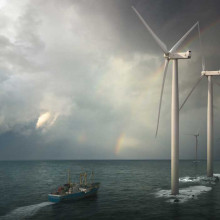
High-performance brake wind turbine with monitoring

Robco robot kit with safety brake from the construction kit
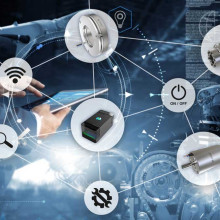
Predictive maintenance for clutches and brakes

Shaft coupling without play, precise and smart

Compensating coupling | For axial, radial and angular offset
